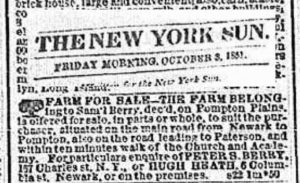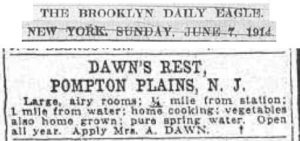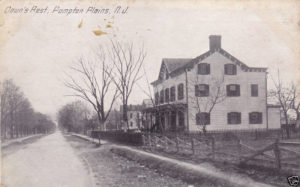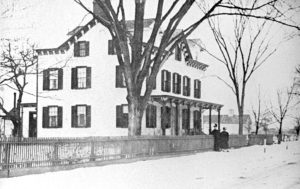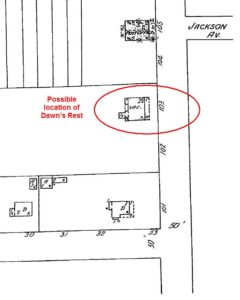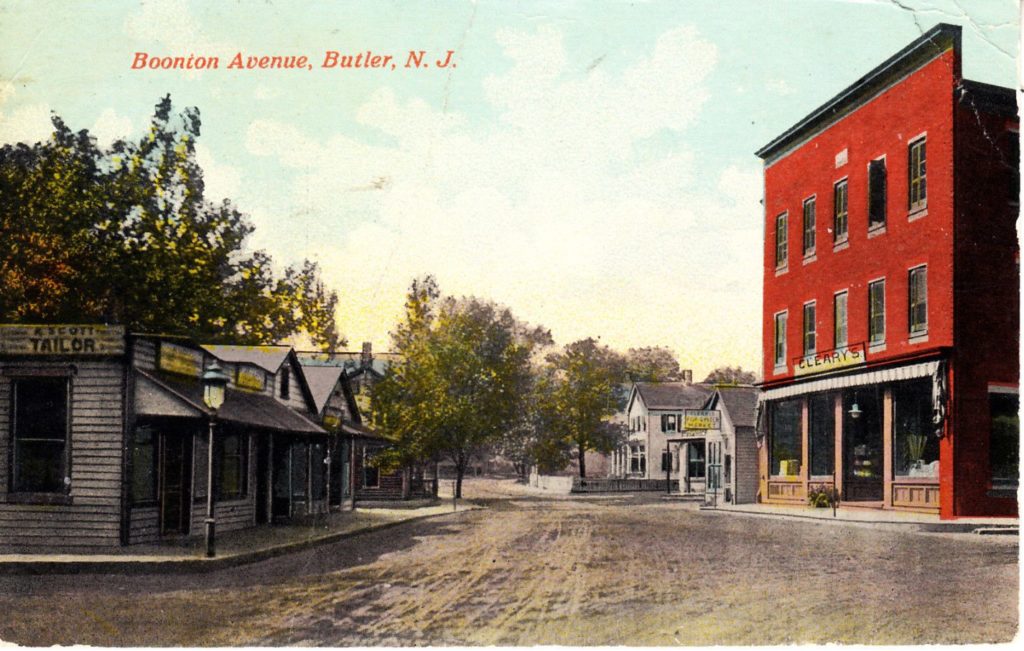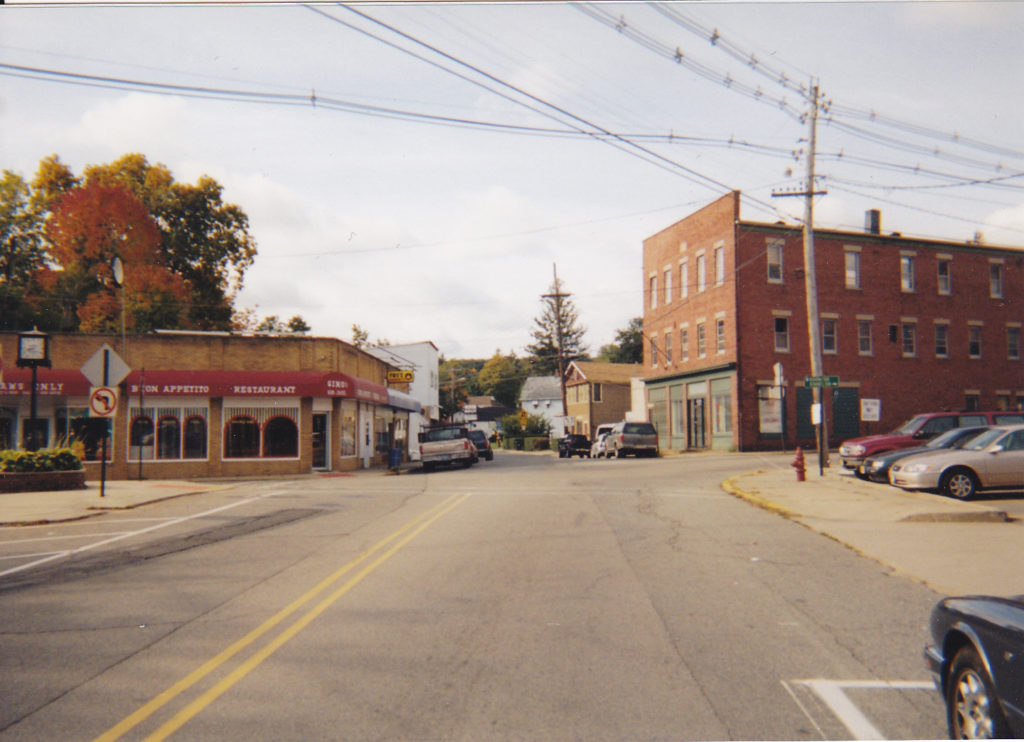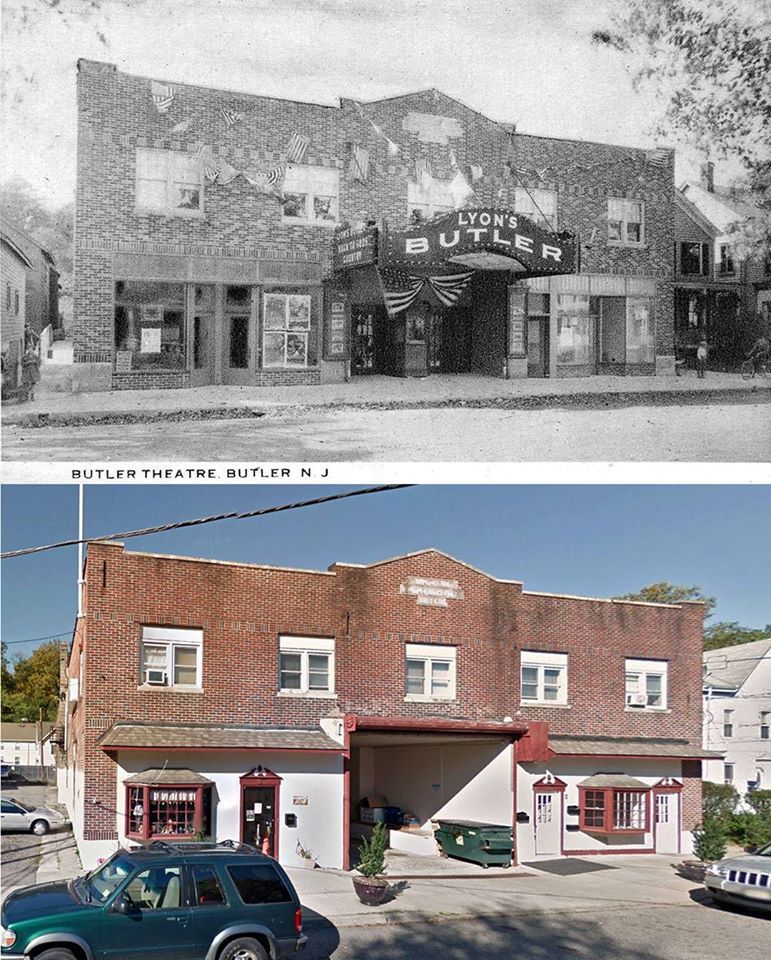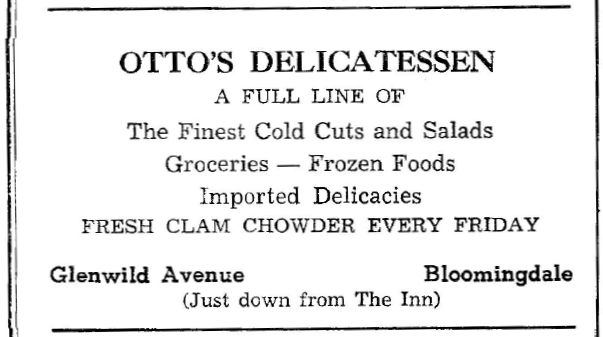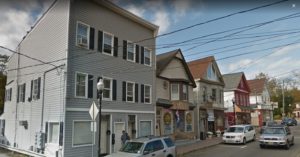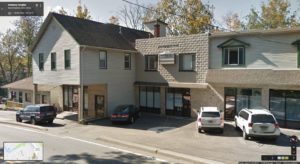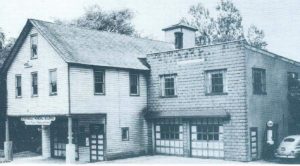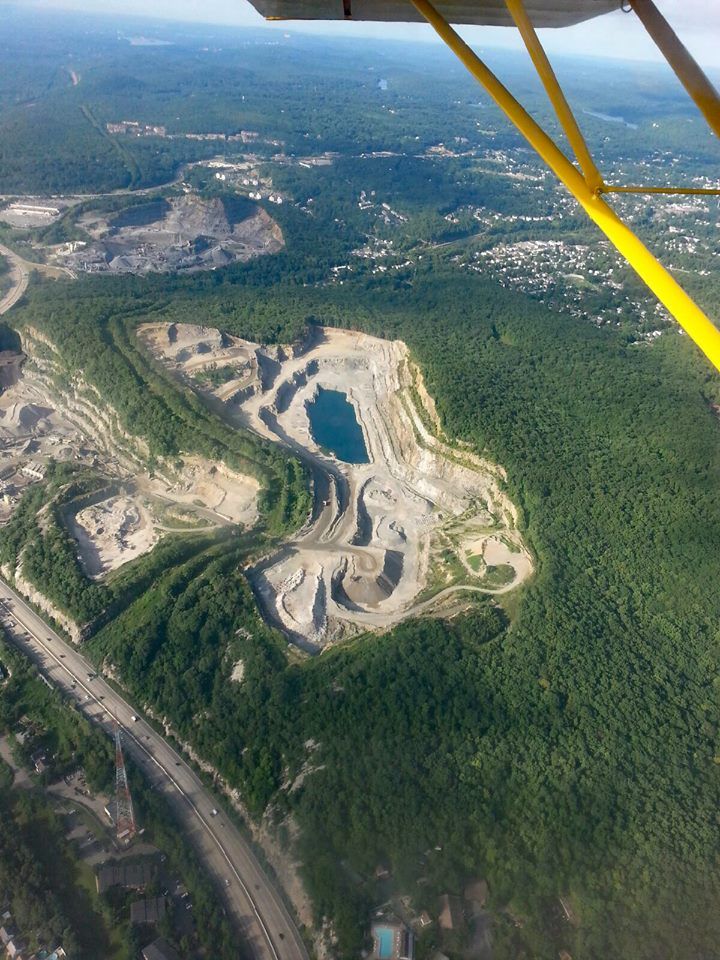October 1851:
FARM FOR SALE – The farm belonging to Sam’l Berry, dec’d, on Pompton Plains, is offered for sale, in parts or whole, to suit the purchaser, situated on the main road from Newark to Pompton, also on the road leading to Paterson, and within ten minutes walk of the Church and Academy. For particulars enquire of PETER S. BERRY 157 Charles st, N.Y. or HUGH HEATH, 6 Columbia st Newark, or on the premises.
The “main road from Newark to Pompton” was, in fact, the Newark-Pompton Turnpike. “Within ten minutes walk of the Church and the [Union] Academy” tells us it wasn’t far from the First Reformed Church of Pompton Plains. That’s all I know; perhaps some Berry descendant can add more in the Comments.
